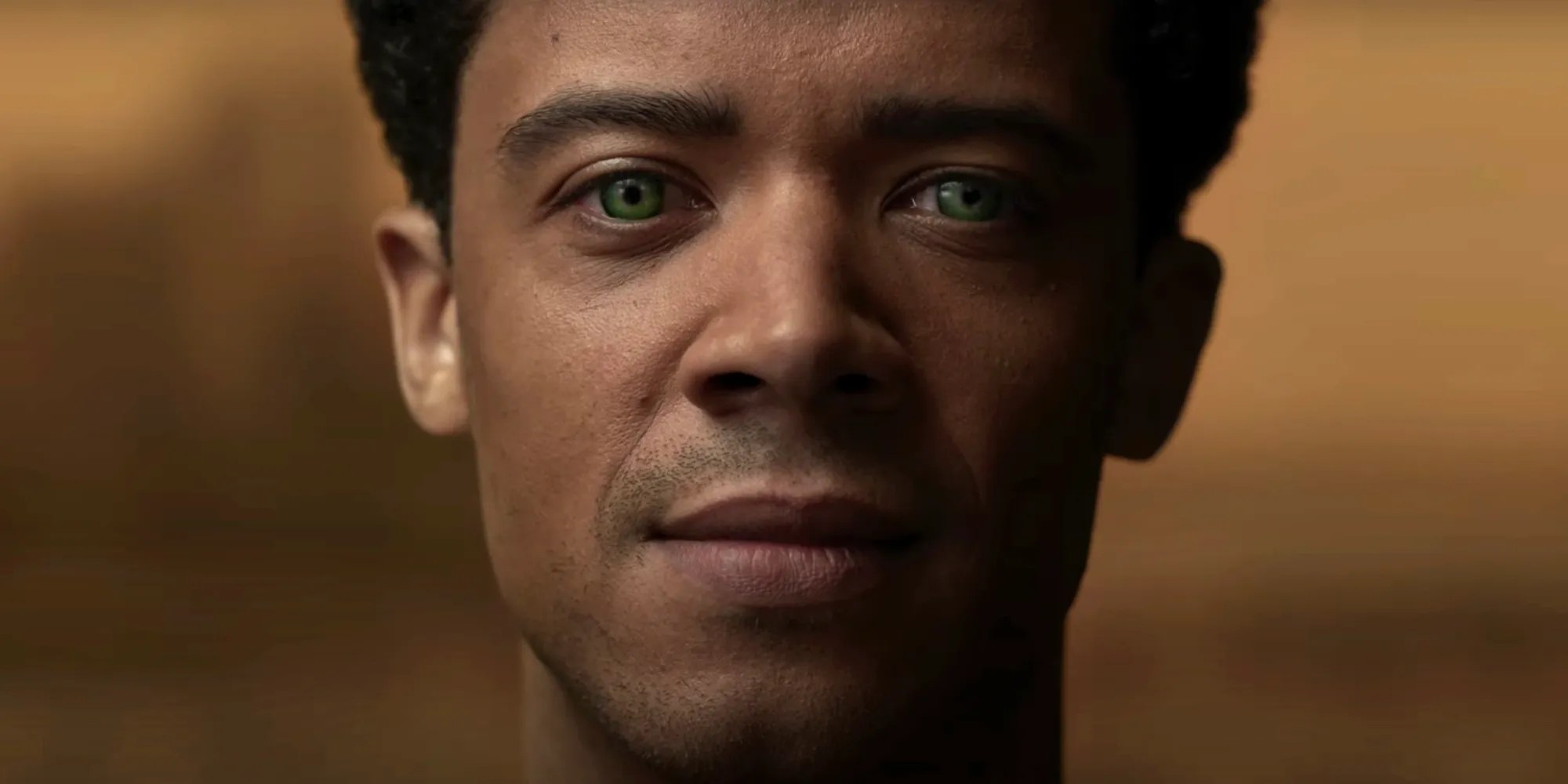‘Interview With the Vampire’ Premiere: Louis and His Complexity as a Character Is Chef’s Kiss
Oh, Louis, Louis!

Deliberately queer vampire content is back in action! We don’t have to search for queerness and unpack subtext in AMC’s new Interview with the Vampire (or if you prefer, Anne Rice’s Interview with the Vampire) series adaptation. It perfectly captures gothic horror and is so queer. Right off the bat (the pun wasn’t intentional, but it works), you’re drawn in by Louis (Jacob Anderson) and Lestat (Sam Reid)’s chemistry. Both actors sell that this is really a romance, a love story with ups and extreme downs—not to mention a whole lot of seduction and violence. But they’re vampires; what else can you expect?
Note: Major spoilers for Interview with the Vampire premiere ahead.
The series isn’t entirely like the ’94 film, as Louis isn’t solely feeling sorry for himself. This Louis is giving his account of his love story and life that eventually includes an adoptive daughter—more on that another time because wow, things get hairy. Naturally, as the title indicates, there’s an interviewer, though he’s not played by Christian Slater this time. Instead, Daniel Molloy (Eric Bogosian) is an ill older man who has interviewed Louis before. Only it didn’t go over so well the first time. However, Louis has changed since their prior interaction. He’s not looking to sink his teeth in.
Louis, as a character, is leagues different than the ’94 version. For starters, Brad Pitt isn’t playing him again. Louis being Black this time around adds an obvious complexity. He’s not a whining former slave owner; he’s a Black man living in New Orleans in 1910 with his family, who runs what his family considers an unsavory business (primarily involving sex workers) to keep everyone afloat. Louis is forced to deal with racist customers and businessmen all the time, and it’s frustrating to watch as a Black viewer. Though knowing he’ll outlive them all (even the ones that don’t get killed) is a satisfying thought.
This version of Louis isn’t without people, though. He starts off with a rather large and growing family. In the ’94 film, Louis lost his family, and that made it easier to choose Lestat (played by Tom Cruise), whereas in this series, he had several choices and, in the end, chose Lestat. After the death of Louis’ brother, he’s eventually turned by Lestat. It’s such an intense scene that marks a turning point for his character. He’s liberated from society, in a way. All of the white people who see him as nothing can’t even touch him anymore.
Allowing Louis to be complex and go through motions of embracing his vampirism was a wise choice. He struggles more with being a vampire than being a gay man, which may sound ridiculous on paper, but it’s actually refreshing. He’s not forced to have a traditional coming out moment. And believe me, coming out stories aren’t always necessary to depict—certainly not in a story like this.
We’ve been presented with a character that isn’t scared of his queerness, something that we see almost on full display in this series. (Imagine if HBO were behind this.) And that further contributes to how he, as a character, is absolutely chef’s kiss. On a different note, I’m relieved we’ve got another Black gay horror character to analyze like this. It’s more important than folks may realize. So, take a bite into this series, you won’t be disappointed.
(featured image: AMC)
Have a tip we should know? tips@themarysue.com